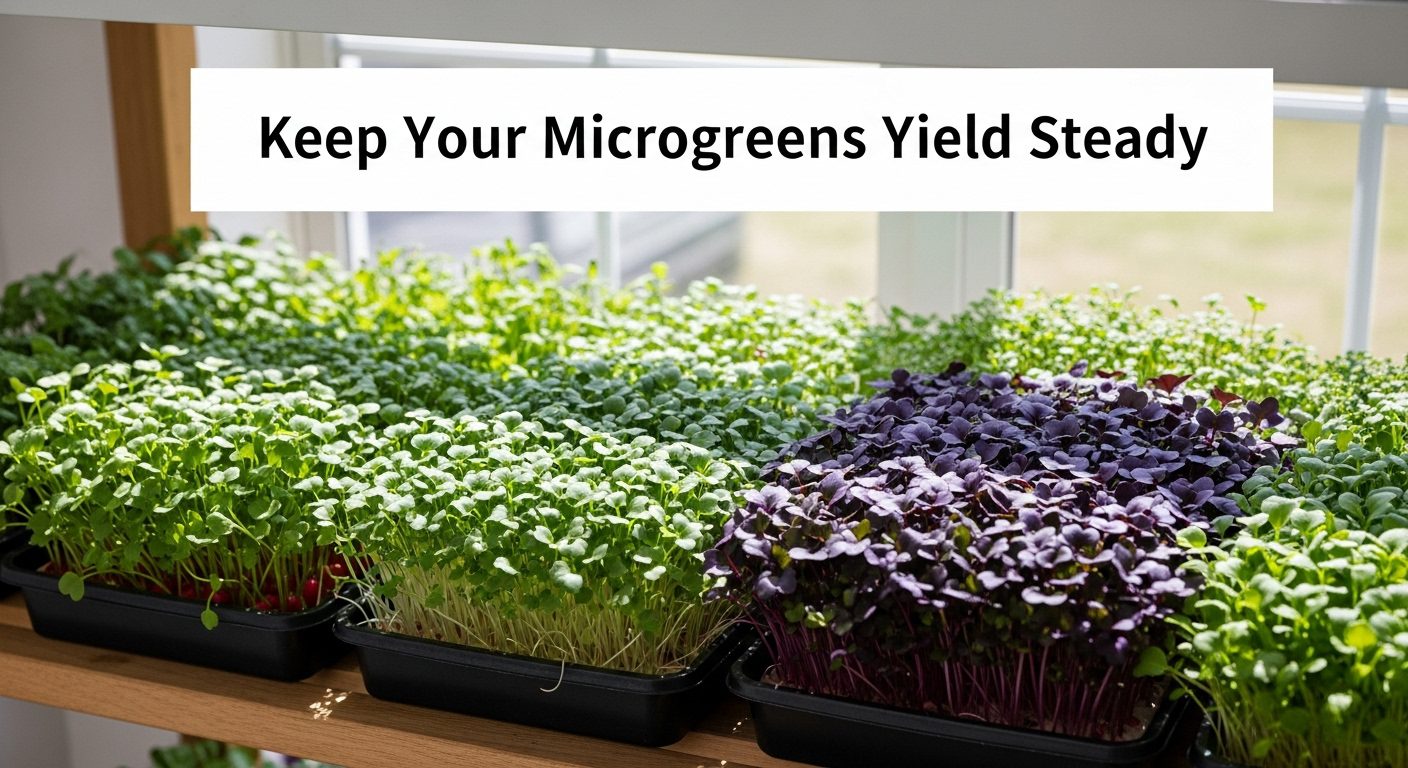
If you live in a rainy area, you might feel limited in your gardening options, but that’s not true.
Rainy places are perfect for plants that love water, like ferns, moss, and hydrangeas. You can make your yard a happy home for these green friends.
Rainy climates let you try cool ideas like small ponds or benches under trees.
These touches make your garden look magical even when it rains. Start today and turn your soggy yard into a green paradise.
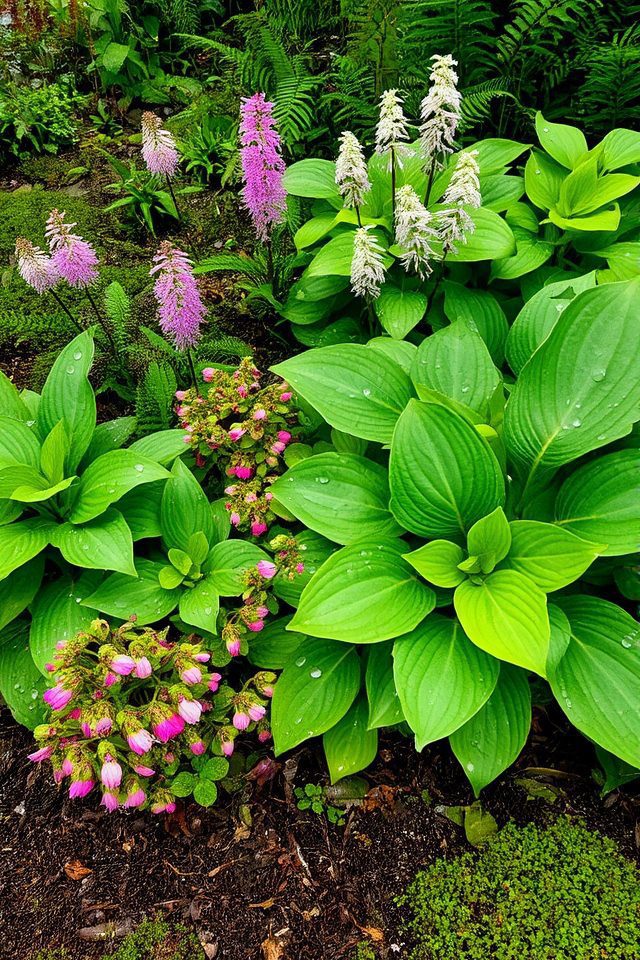
When gardening in rainy areas, selecting moisture-loving plants is essential to thrive in the damp conditions. Opt for an array of colorful ferns, hostas, and astilbes that not only tolerate wet soil but also bring texture and vibrancy to your garden. Incorporate native species, like turtleshead and swamp milkweed, to attract local wildlife and maintain ecological balance. These plants will flourish in the abundant moisture, creating a lush and thriving garden oasis.
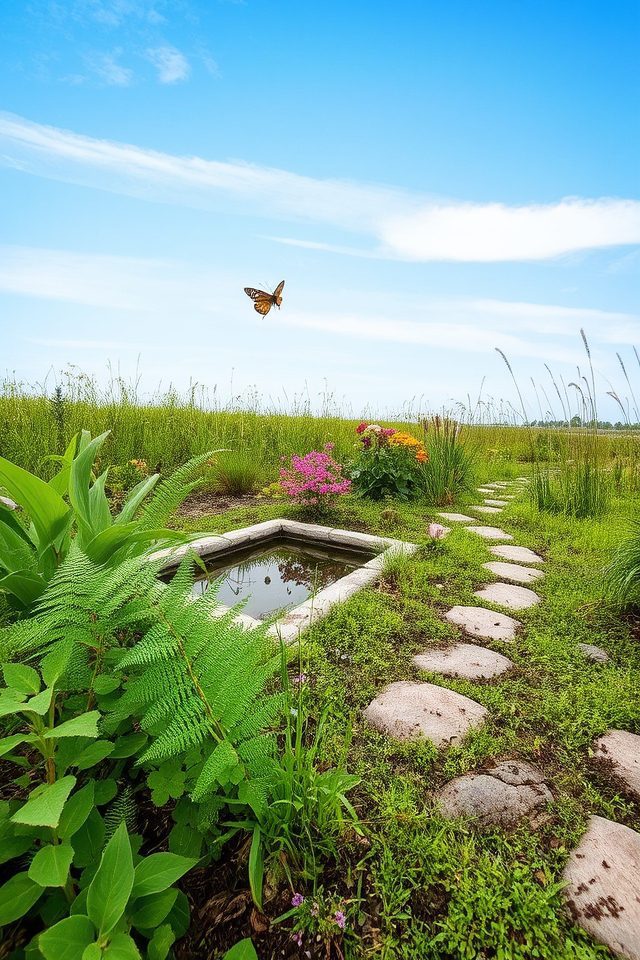
Implementing rain gardens is an excellent way to enhance gardens in rainy areas while promoting eco-friendliness. These specially designed gardens capture and absorb rainwater runoff, allowing it to soak into the ground rather than flow into drains. To create a rain garden, choose native plants that thrive in wet conditions, ensuring it blends seamlessly with the landscape. Not only do rain gardens reduce flooding, but they also provide habitats for wildlife, enhance biodiversity, and improve water quality.
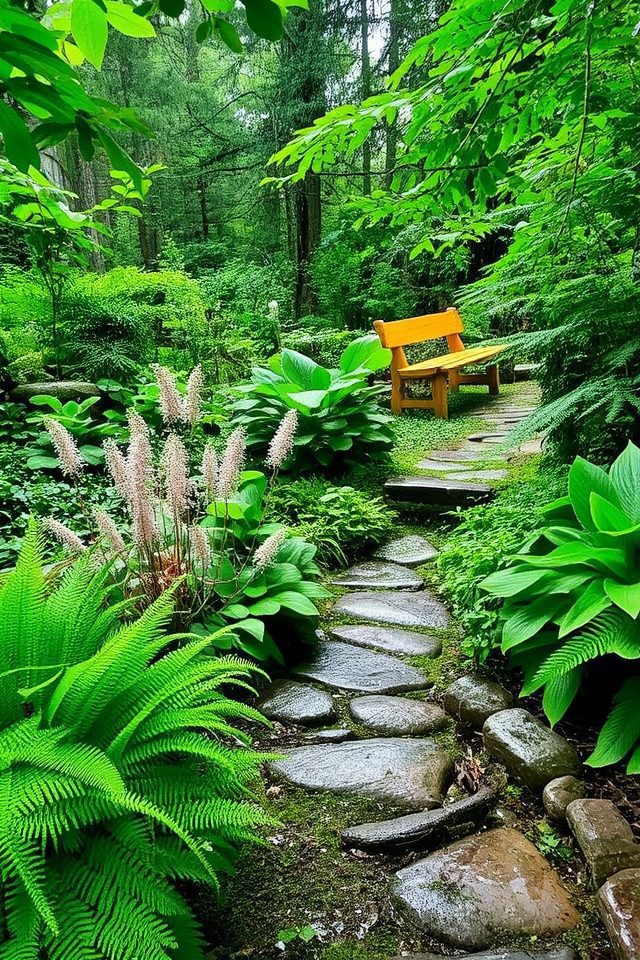
Creating a shade garden is an excellent way to maximize your outdoor space in rainy places where sunlight is limited. Choose moisture-tolerant plants such as ferns, hostas, and astilbes that thrive in dappled light. Incorporate layers of foliage for texture, and consider adding decorative stones or mulch to retain soil moisture while minimizing weeds. By designing pathways and seating areas, you can transform your shaded retreat into a tranquil oasis to enjoy the soothing sounds of raindrops.
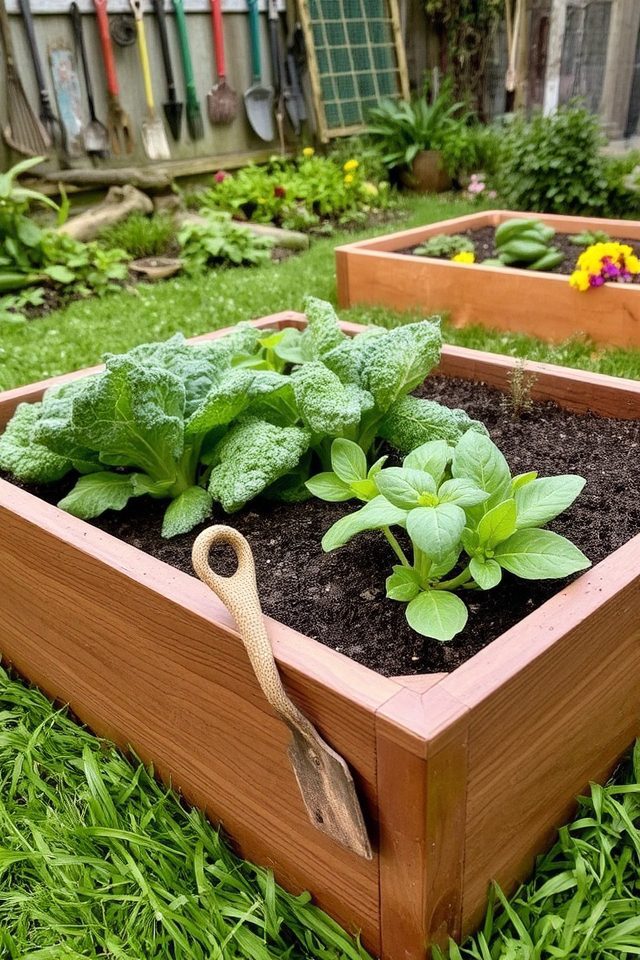
Utilizing raised garden beds is an excellent strategy for gardening in rainy places. These elevated structures improve drainage, ensuring that excess water doesn’t pool around plants. By creating a controlled environment, raised beds help maintain soil health and reduce the risk of root rot. Additionally, they can be filled with a mix of soil tailored to the specific needs of your plants, enhancing growth and productivity. This approach also makes it easier to manage soil quality and minimize compaction.
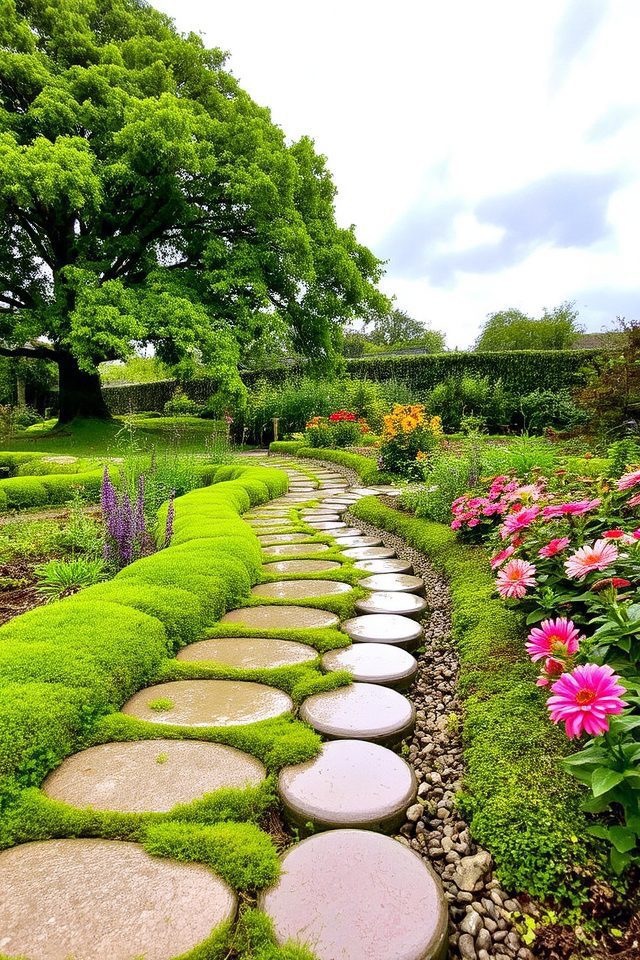
When creating a garden in a rainy area, installing draining pathways is essential to managing excess water and preventing plant damage. These pathways help redirect rainwater away from planting beds, thereby reducing the risk of root rot and soil erosion. Use materials like gravel, cobblestones, or permeable pavers that allow water to filter through while maintaining a stable surface. Incorporating gentle slopes in your pathways can further guarantee proper drainage, keeping your garden vibrant and healthy even in wet conditions.
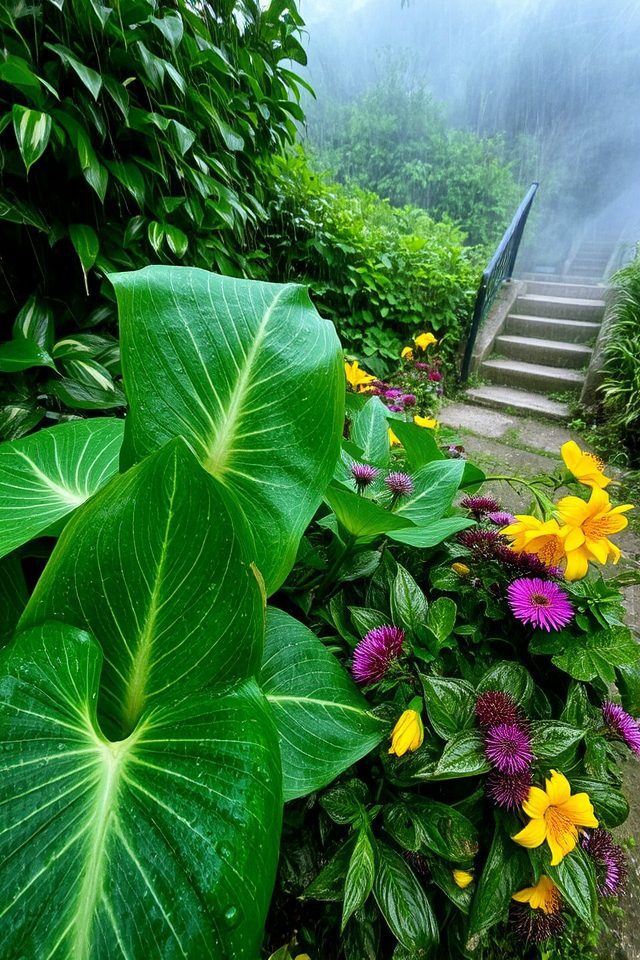
Incorporating bold foliage into your rainy garden can transform it into a vibrant oasis. Select plants with large, glossy leaves such as elephant ears or hostas, which thrive in moist conditions. These striking plants add texture and visual interest while effectively managing the excess moisture common in rainy locations. Pair them with colorful flowers that can withstand the rain, creating a dynamic and lush environment that bursts with life, even on the dreariest days.
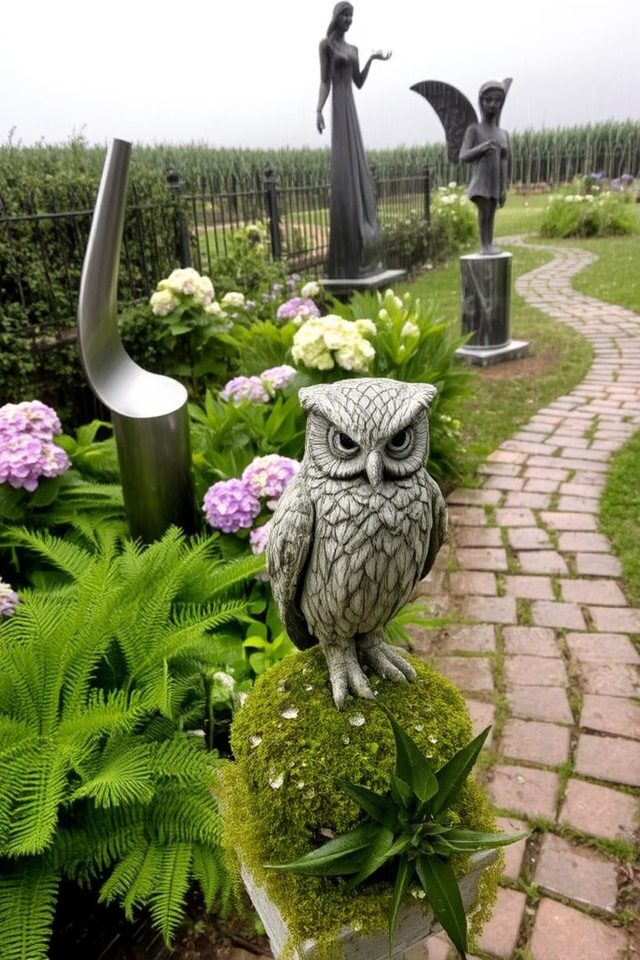
Incorporating garden sculptures into rainy landscapes can elevate the aesthetics of your outdoor space while harmonizing with the natural surroundings. Choose weather-resistant materials, such as stone or treated metal, to withstand the elements. Position sculptures near vibrant foliage or amidst flower beds to create focal points that draw the eye, even on dreary days. These artistic elements bring personality and charm, offering a unique contrast against the lush greenery that thrives in moist conditions.
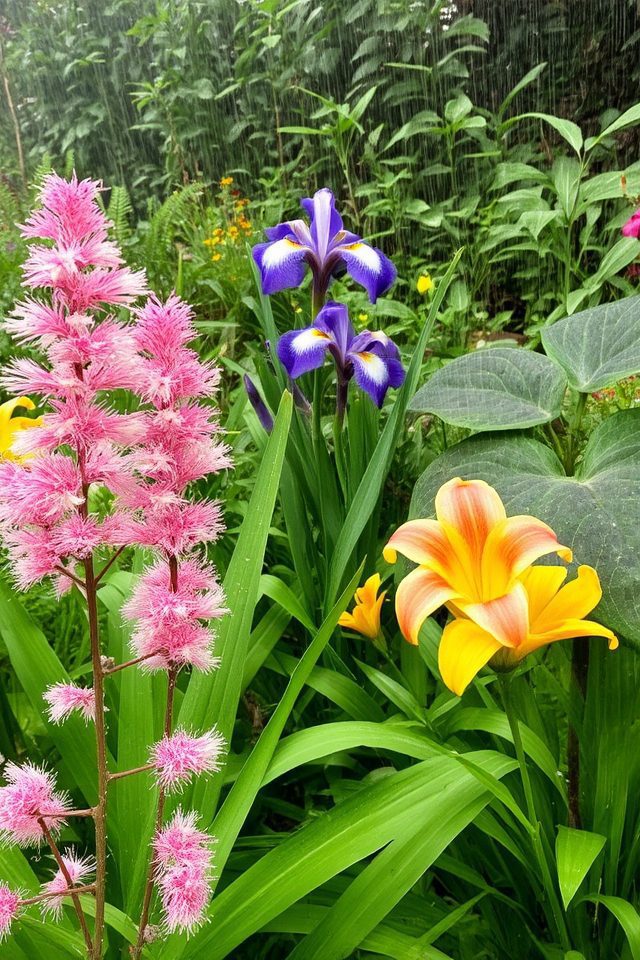
When selecting perennial flowers for rainy climates, focus on varieties that thrive in wet conditions. Consider species like astilbe, which offers feathery plumes, and Japanese iris, known for its striking blooms. Other excellent choices include hostas, which provide lush foliage, and the resilient daylily, celebrated for its vibrant colors. Choose plants that not only tolerate moisture but also contribute to the overall beauty of your garden, ensuring a vibrant landscape throughout the seasons.
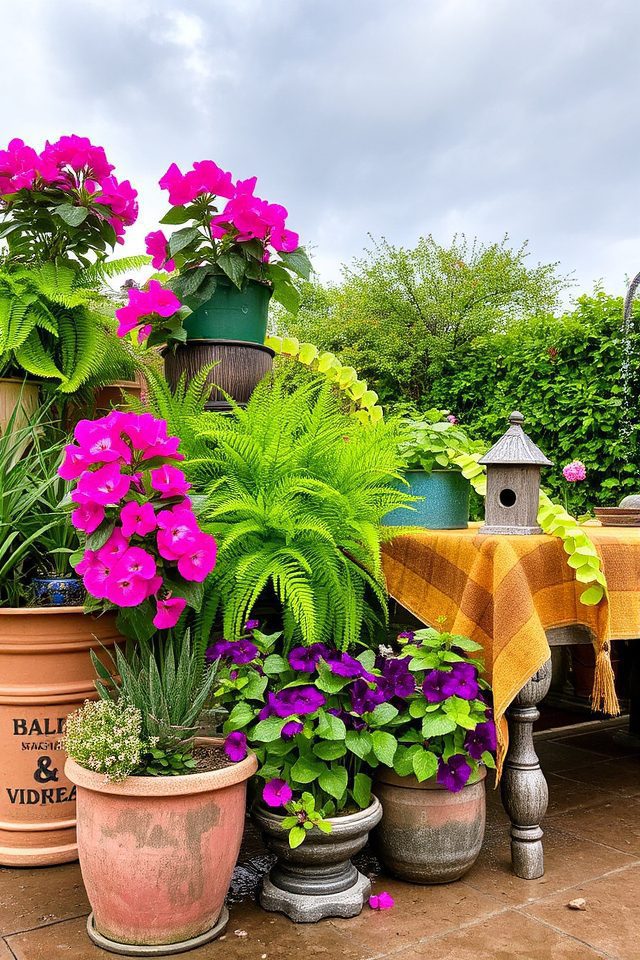
Colorful container gardens are a vibrant solution for rainy places, allowing you to create a dynamic display even in wet conditions. Choose sturdy, weather-resistant containers filled with a variety of plants that thrive in moisture, such as ferns, colorful annuals, and perennial grasses. Position them strategically on patios or balconies to catch the eye. Incorporating a mix of heights and colors not only adds interest but also makes your outdoor space cheerful and inviting, rain or shine.
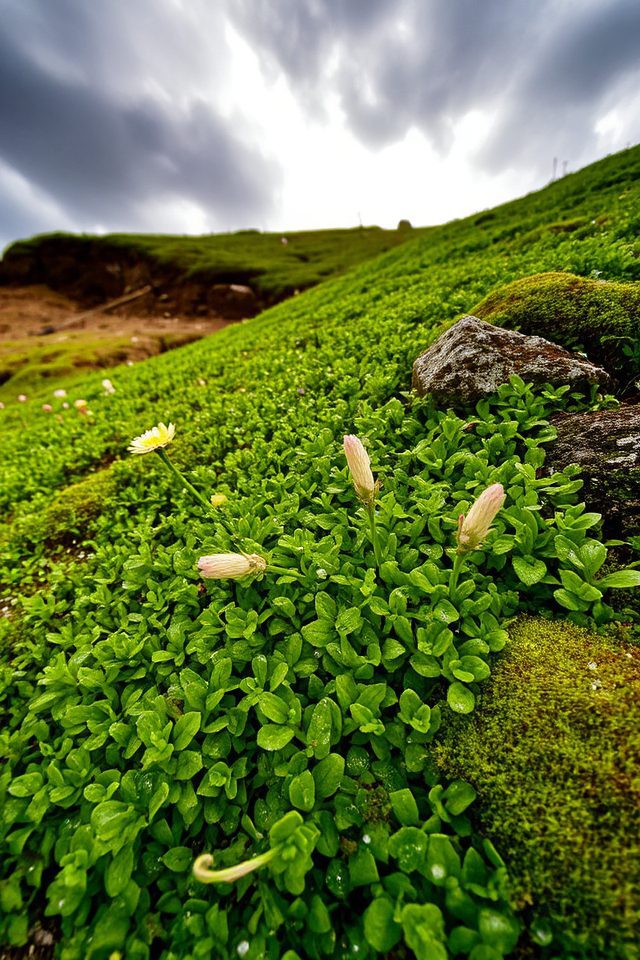
Ground covers are an excellent solution for preventing erosion in rainy areas. These low-growing plants spread quickly, forming a dense mat that protects soil from washing away during heavy rains. They not only stabilize the ground but also enhance the garden’s aesthetic appeal. Varieties like creeping thyme or sedum thrive in moist conditions, adding color and texture while effectively managing runoff. Incorporating ground covers will help maintain the integrity of your landscape while keeping it visually pleasing.
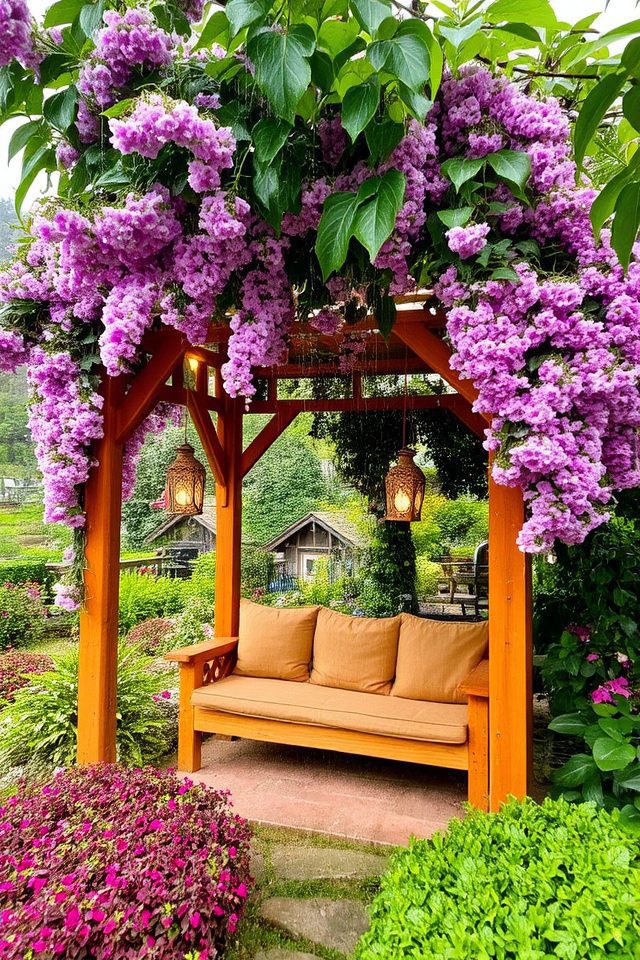
Building an outdoor shelter is an excellent way to enjoy your garden despite rainy weather. Consider constructing a pergola, gazebo, or a simple awning to provide protection from the elements. These structures can be adorned with climbing plants or hanging lanterns, creating an inviting atmosphere. With comfortable seating and decorative elements, your outdoor shelter becomes a cozy retreat where you can relish the sound of rain while staying dry and connected to nature.
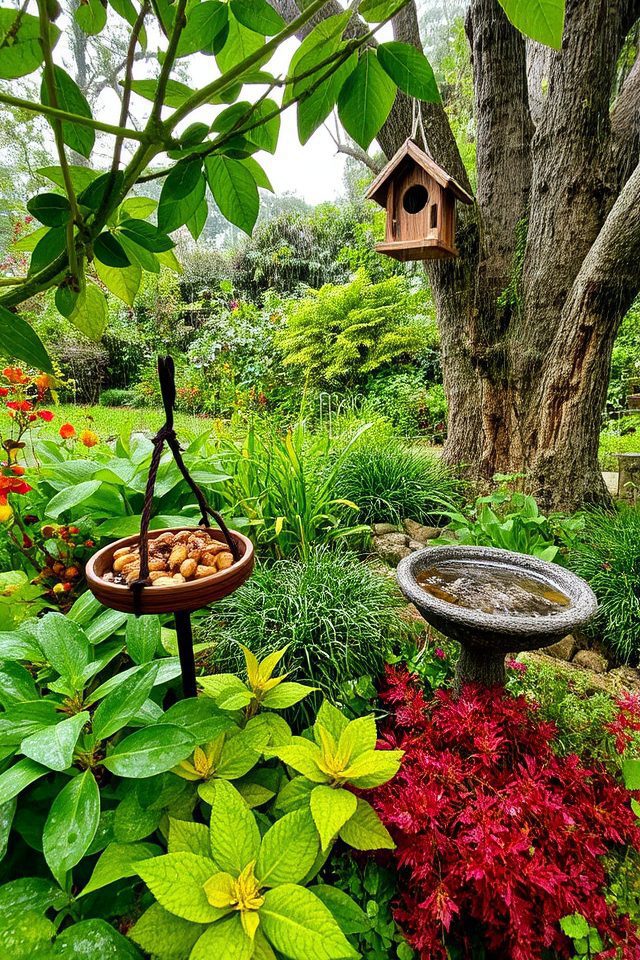
Creating a bird-friendly space in your garden is a wonderful way to bring life and color to rainy locales. Start by incorporating native plants that produce berries and seeds, providing essential food sources. Add bird feeders and baths to guarantee they have fresh water and nourishment, while strategically placing perches and shrubs for shelter and nesting. Use natural materials for birdhouses to blend with the environment and create a welcoming haven that attracts a diverse range of birds.

Adding water features in gardens located in rainy places can enhance the natural beauty and soundscape of your outdoor space. Consider incorporating elements like ponds, fountains, or small streams that can manage excess water effectively while creating a soothing ambiance. These features not only add aesthetic appeal but can also attract wildlife, such as birds and frogs, creating a vibrant ecosystem. When designed thoughtfully, they transform rainy days into opportunities for enjoying the serene beauty of your garden.
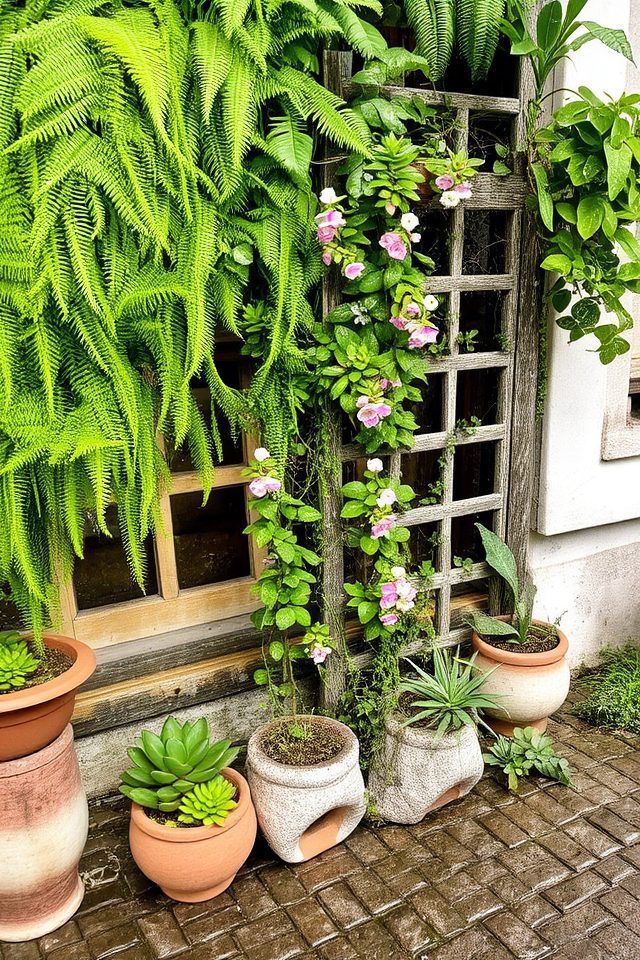
Implementing vertical gardening is an innovative way to maximize space and maintain a lush garden in rainy areas. Utilizing walls, fences, and trellises, you can create a stunning display of plants while ensuring good drainage. Vertical structures help to reduce water pooling at the roots by allowing excess rainwater to flow away quickly. Choose moisture-tolerant plants such as ferns or climbing vines, which thrive in humid conditions, to enhance your vertical garden’s beauty and sustainability.
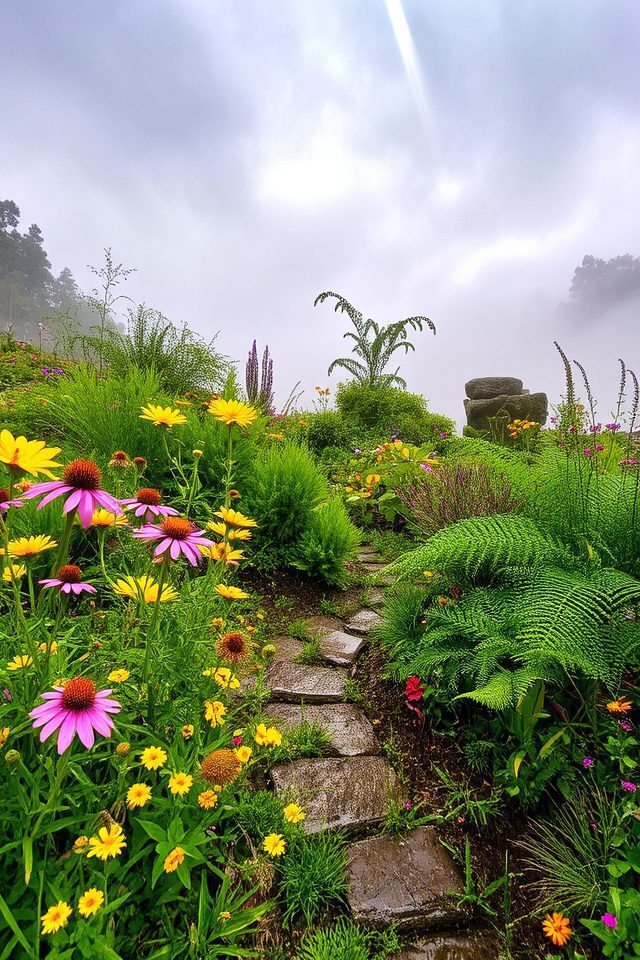
Embracing native plants in rainy areas is a smart choice for gardeners. These plants are naturally adapted to local climates and soil conditions, making them resilient to excessive moisture. They require less maintenance and water, helping to conserve resources. Additionally, native flora supports local wildlife by providing essential habitats and food sources. By incorporating native plants into your garden, you create a vibrant, sustainable landscape that thrives even in wet conditions.
So, why not transform your rainy space into a vibrant paradise that even the sun envies? With moisture-loving plants and whimsical sculptures, you’ll create a lush haven pulsating with life. Imagine birds chirping, butterflies dancing, and your friends gasping in awe as they wander through your enchanted garden! By embracing these 15 creative ideas, you’ll not only make the most of the rain but also craft an outdoor masterpiece that turns every drop into pure magic.
